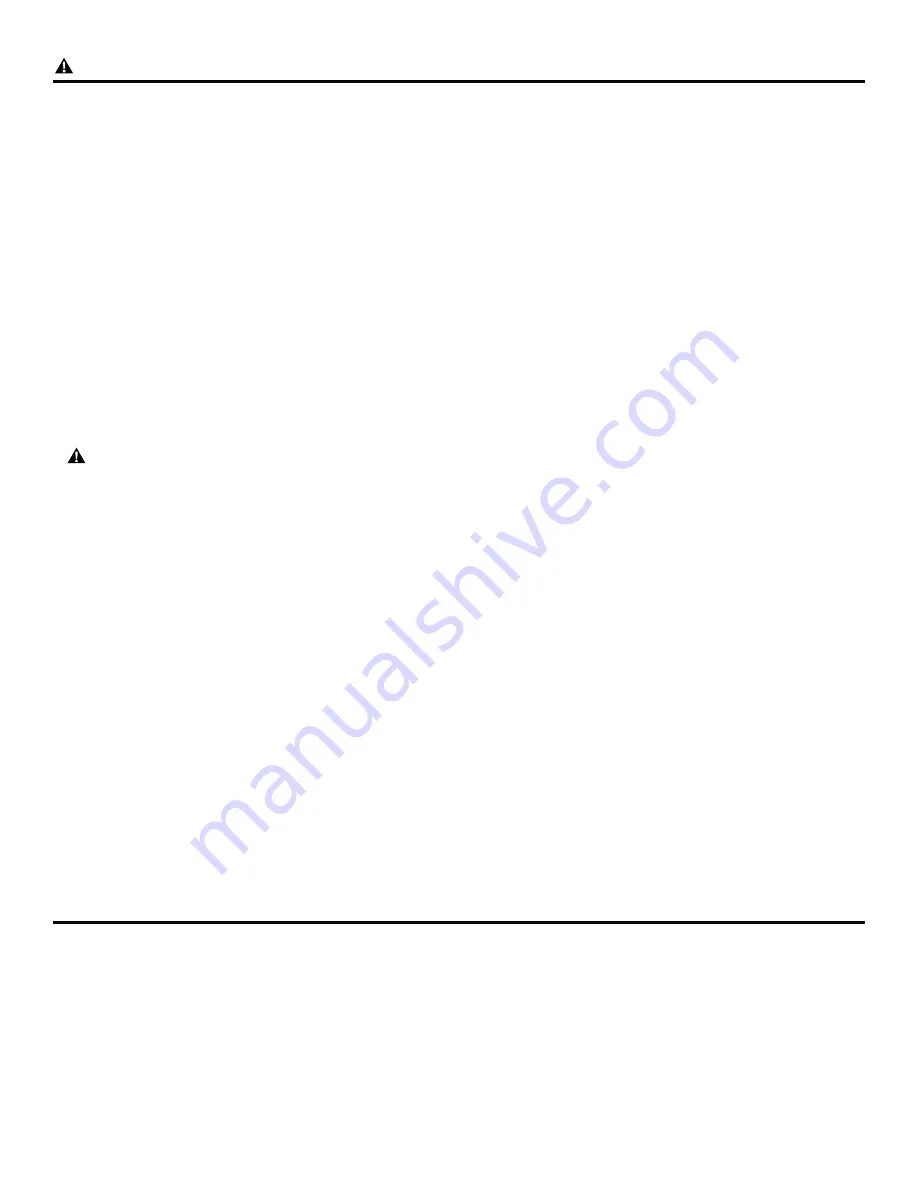
22
SAFETY INFORMATION
c) The lower guard should be retracted manually only for special cuts, such as “plunge
cuts” and “compound cuts.” Raise the lower guard with the retracting handle and,
as soon as blade enters the material, the lower guard must be released.
For all other
sawing, the lower guard should be allowed to operate automatically.
d) Always observe that the lower guard is covering the blade before placing the saw
An unprotected, coasting blade will cause the saw to walk
backwards, cutting whatever is in its path. Be aware of the time it takes for the blade to
stop after switch is released.
ADDITIONAL SAFETY RULES FOR CIRCULAR SAWS
<
Always wear a dust mask
<
Only use recommended saw blades
<
Always wear hearing protection
<
Do not to use any abrasive wheels
WARNING: Some dust created by power sanding, sawing, grinding, drilling and other
construction activities contains chemicals known to the state of California to cause cancer,
birth defects or other reproductive harm.
Some examples of these chemicals are:
< Lead from lead-based paints.
< Crystalline silica from bricks, cement, and other masonry products.
< Arsenic and chromium from chemically treated lumber.
Your risk from these exposures varies, depending upon how often you do this type of work.
To reduce your exposure to these chemicals:
< Work in a well-ventilated area.
< {! % !
microscopic particles.
Avoid prolonged contact with dust from power sanding, sawing, grinding, drilling, and other
construction activities. Wear protective clothing and wash exposed areas with soap and water.
Allowing dust to get into your mouth or eyes or to lie on the skin may promote absorption of
harmful chemicals.
CONTENTS
Cordless circular saw, blade, blade wrench
















































